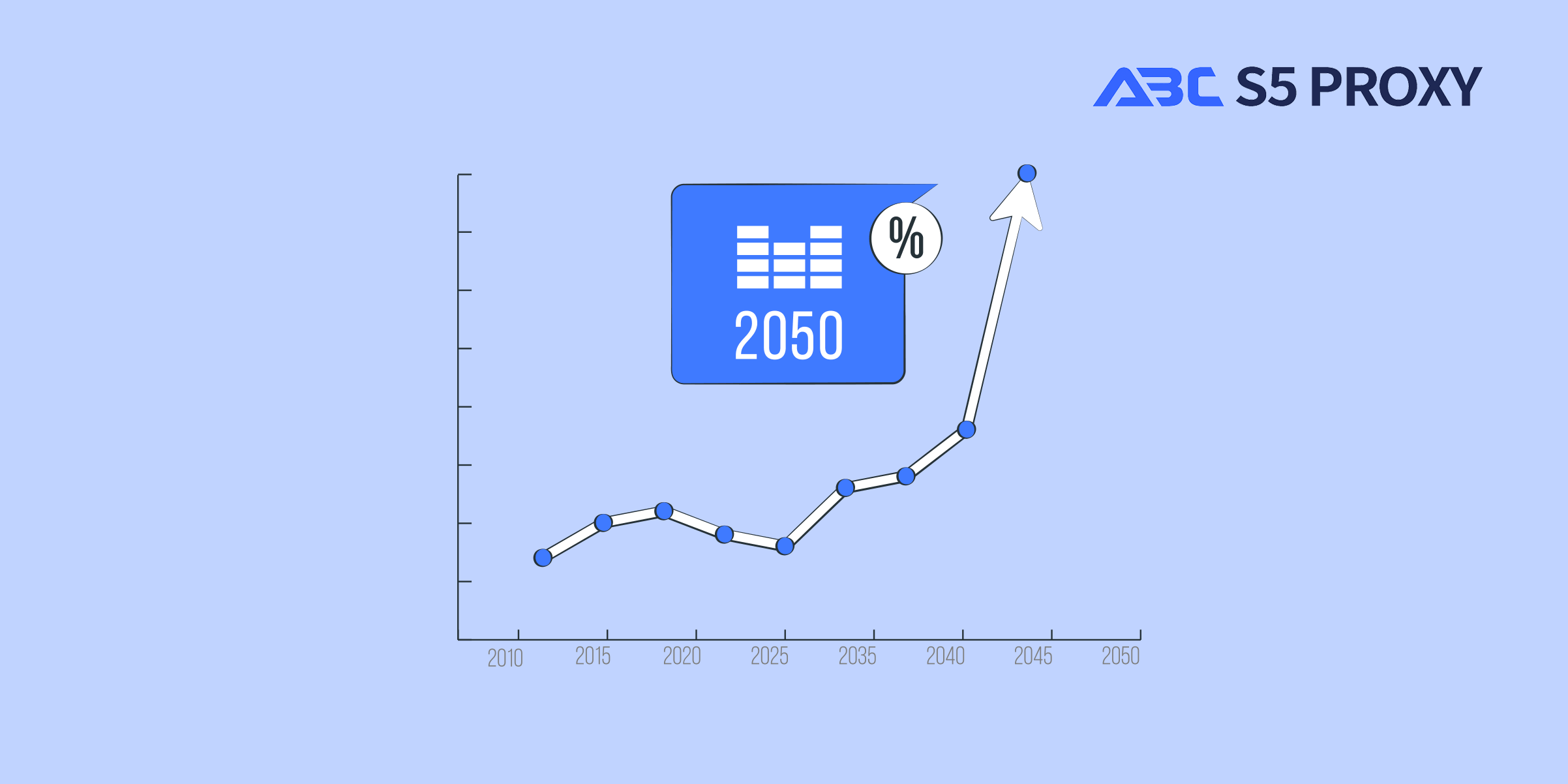Residential Proxies
Allowlisted 200M+ IPs from real ISP. Managed/obtained proxies via dashboard.

Proxies
Residential Proxies
Allowlisted 200M+ IPs from real ISP. Managed/obtained proxies via dashboard.
Residential (Socks5) Proxies
Over 200 million real IPs in 190+ locations,
Unlimited Residential Proxies
Use stable, fast, and furious 700K+ datacenter IPs worldwide.
Static Residential proxies
Long-lasting dedicated proxy, non-rotating residential proxy
Dedicated Datacenter Proxies
Use stable, fast, and furious 700K+ datacenter IPs worldwide.

Web Unblocker
View content as a real user with the help of ABC proxy's dynamic fingerprinting technology.
Proxies
API
Proxy list is generated through an API link and applied to compatible programs after whitelist IP authorization
User+Pass Auth
Create credential freely and use rotating proxies on any device or software without allowlisting IP
Proxy Manager
Manage all proxies using APM interface

Proxies
Residential Proxies
Allowlisted 200M+ IPs from real ISP. Managed/obtained proxies via dashboard.
Starts from
$0.77/ GB
Residential (Socks5) Proxies
Over 200 million real IPs in 190+ locations,
Starts from
$0.045/ IP
Unlimited Residential Proxies
Use stable, fast, and furious 700K+ datacenter IPs worldwide.
Starts from
$79/ Day
Rotating ISP Proxies
ABCProxy's Rotating ISP Proxies guarantee long session time.
Starts from
$0.77/ GB
Static Residential proxies
Long-lasting dedicated proxy, non-rotating residential proxy
Starts from
$5/MONTH
Dedicated Datacenter Proxies
Use stable, fast, and furious 700K+ datacenter IPs worldwide.
Starts from
$4.5/MONTH
Knowledge Base
English
繁體中文
Русский
Indonesia
Português
Español
بالعربية

Hard Data vs Soft Data: Understanding the Differences and Leveraging Both for SEO Success
In the realm of data analysis and decision-making, two terms frequently used are "hard data" and "soft data." Understanding the distinctions between these two types of data is essential for making informed choices in various aspects of business, including search engine optimization (SEO). In this blog post, we will delve into the definitions of hard data and soft data, explore their implications in the context of SEO, and discuss how businesses can leverage both to enhance their online visibility and performance.
**Hard Data:** Hard data refers to quantifiable and measurable information. This type of data is typically numerical and can be easily verified. Examples of hard data include website traffic numbers, conversion rates, keyword rankings, bounce rates, and revenue figures. Hard data is objective and concrete, providing factual insights that can be used to make strategic decisions with a high level of confidence.
**Soft Data:** Soft data, on the other hand, is qualitative in nature and often subjective. It encompasses non-measurable information such as customer feedback, user reviews, social media sentiment, and brand perception. Soft data provides valuable insights into customer preferences, opinions, and emotional reactions, offering a more nuanced understanding of user behavior and attitudes.
In the realm of SEO, hard data plays a crucial role in driving strategic decisions and optimizing website performance. By analyzing hard data metrics such as keyword rankings, organic traffic, click-through rates, and conversion rates, businesses can identify trends, track performance, and measure the effectiveness of their SEO strategies. Hard data allows SEO professionals to make data-driven decisions, adjust tactics based on performance data, and demonstrate ROI to stakeholders.
While hard data provides valuable quantitative insights, soft data offers a qualitative perspective that can complement and enrich SEO strategies. Soft data sources such as customer feedback, social media comments, and online reviews provide valuable information about user preferences, pain points, and sentiments. By analyzing soft data, businesses can gain a deeper understanding of their target audience, uncover emerging trends, and identify areas for improvement in their SEO efforts.
To achieve optimal results in SEO, businesses should leverage both hard and soft data in a complementary manner. By combining quantitative metrics with qualitative insights, businesses can develop holistic SEO strategies that are data-driven and customer-centric. Here are some strategies for integrating hard and soft data in the SEO process:
1. **Keyword Research:** Use hard data metrics such as search volume and competition levels to identify high-potential keywords. Supplement this with soft data from customer feedback and social media conversations to understand user intent and preferences related to those keywords.
2. **Content Optimization:** Analyze hard data metrics like page views and bounce rates to assess content performance. Use soft data from user comments and reviews to gather insights on content quality, relevance, and engagement levels.
3. **Link Building:** Utilize hard data metrics such as domain authority and backlink profiles to evaluate link opportunities. Incorporate soft data from social media shares and mentions to identify influencers and brand advocates for outreach.
4. **Performance Tracking:** Monitor hard data metrics such as organic traffic growth and conversion rates to measure SEO performance. Augment this with soft data from customer surveys and feedback forms to gain qualitative insights on user satisfaction and website experience.
By combining the analytical rigor of hard data with the richness of soft data, businesses can develop SEO strategies that are data-informed, customer-focused, and adaptable to evolving market dynamics.
In the world of SEO, the interplay between hard data and soft data is essential for driving success. While hard data provides quantifiable metrics for performance evaluation, soft data offers qualitative insights into customer behavior and preferences. By harnessing the power of both types of data, businesses can craft SEO strategies that are not only based on empirical evidence but also resonate with the needs and expectations of their target audience. Embracing a data-driven approach that integrates hard and soft data is key to unlocking the full potential of SEO and achieving sustainable online growth.
Featured Posts
Popular Products
Residential Proxies
Allowlisted 200M+ IPs from real ISP. Managed/obtained proxies via dashboard.
Residential (Socks5) Proxies
Over 200 million real IPs in 190+ locations,
Unlimited Residential Proxies
Use stable, fast, and furious 700K+ datacenter IPs worldwide.
Rotating ISP Proxies
ABCProxy's Rotating ISP Proxies guarantee long session time.
Residential (Socks5) Proxies
Long-lasting dedicated proxy, non-rotating residential proxy
Dedicated Datacenter Proxies
Use stable, fast, and furious 700K+ datacenter IPs worldwide.
Web Unblocker
View content as a real user with the help of ABC proxy's dynamic fingerprinting technology.
Related articles

How does the ChatGPT RAG example improve information processing capabilities
Analyze the actual application scenarios of ChatGPT combined with Retrieval Augmented Generation (RAG) technology, explore its value in knowledge integration and data acquisition, and understand how abcproxy provides underlying support for the RAG system.

How does Best Socks5 Proxy ensure anonymous network needs
This article explores the core value of Socks5 proxy in anonymous networks and analyzes how abcproxy high anonymous proxy meets diverse security needs.

How to remove website access restrictions
This article analyzes the technical principles and mainstream solutions of website access restrictions, and explores the core role of proxy IP in bypassing regional blocking and anti-crawling mechanisms. abcproxy provides multiple types of proxy IP services to help you break through network restrictions efficiently.